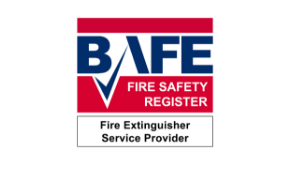As it’s Fire Door Safety Week, it’s important to spotlight the life-saving role fire doors play in preventing the spread of fire and smoke. A well-maintained fire door can buy precious time in an emergency, protecting both occupants and property. Yet, a concerning number of fire doors across the UK fail to meet basic safety standards, exposing occupants to unnecessary risks.
Shocking Statistics on Fire Door Compliance
Despite the critical role fire doors play in saving lives, a significant number of them fail to meet safety standards. Multiple studies reveal a troubling pattern of non-compliance that leaves buildings vulnerable to fire risks. This year’s Fire Door Safety Week theme, “A False Sense of Safety,” highlights a critical issue: many building occupants assume their fire doors are compliant when, in reality, they often aren’t. This misplaced trust can have devastating consequences.
According to recent findings:
- 75% of fire doors fail to meet safety regulations, primarily due to faulty installation, poor maintenance, or damage over time. This means that three out of four doors may not provide adequate protection in the event of a fire.
- A survey by the British Woodworking Federation found that 53% of UK fire door inspections revealed issues that could render them ineffective during a fire.
- In residential buildings, 39% of tenants have reported fire doors being wedged open. A fire door left open cannot stop the spread of fire and smoke, dramatically increasing the risk for everyone in the building .
- More worryingly, nearly 33% of people in a fire safety survey admitted they did not know what a fire door is, highlighting significant knowledge gaps around fire safety .
- Fire and Rescue services in the UK responded to over 13,000 building fires in 2023, many of which occurred in properties with non-compliant fire safety measures . Properly maintained fire doors could have reduced damage and improved the chances of safe evacuation.
The theme serves as a wake-up call for building managers, landlords, and tenants: don’t assume fire doors are functioning correctly – make sure of it. Regular inspections and education are the only way to eliminate this false sense of safety and ensure real protection.
What Makes a Fire Door Effective?
Fire doors are specially designed to resist fire and smoke for a set period – typically 30 to 60 minutes – providing valuable time for building occupants to escape. However, even the best fire door is ineffective if it is not properly maintained or if its components (such as seals, hinges, or self-closing devices) are damaged or missing.
Here’s what you should check to ensure a fire door is compliant:
- Fit and Alignment: The door must close firmly against the frame without gaps.
- Condition of Seals: Intumescent seals around the edges of the door should expand when exposed to heat, preventing smoke and fire from spreading.
- Functionality of Closures: A fire door should close automatically to serve its purpose in a fire. If it doesn’t, it could be a serious risk.
Common Fire Door Compliance Failures
According to a recent survey from the International Fire and Safety Journal, fire door compliance failures and gaps in knowledge about proper usage are alarmingly widespread. The survey pointed out several key areas of concern:
- Lack of Education: Building occupants, particularly in multi-occupancy dwellings like student accommodations and care homes, often lack knowledge on how to use fire doors properly.
- Maintenance Gaps: Fire doors that are not regularly inspected for damage or wear pose a significant risk.

The Role of Regular Inspections
Fire doors are subject to wear and tear, making regular inspections critical. Without routine maintenance, even the best-installed fire door can become a weak point in a building’s fire safety system. As experts in fire safety systems, CDS emphasises the importance of scheduled fire door inspections, which can help prevent compliance failures and maintain fire protection standards.
Simple Steps to Ensure Compliance
To ensure your building is fire-safe:
- Schedule Regular Inspections: Ensure all fire doors are inspected at least once every six months.
- Educate Building Occupants: It’s crucial to inform everyone using the building about how fire doors function and why they should never be propped open.
- Fix Issues Immediately: Any signs of damage or malfunction should be repaired as soon as possible to prevent future failures.
The 5-Step Fire Door Check: Ensure Your Fire Door is Ready to Protect
A fire door can only perform its life-saving function if it’s in top condition. Thankfully, there are simple checks anyone can carry out to identify potential issues. The 5-Step Fire Door Check is an easy way to quickly assess the effectiveness of your fire doors and address any concerns before they become critical.
1. Certification
Look for a certification label or marking on the top or side of the door. This is typically a sticker or stamp from an official body such as the British Woodworking Federation (BWF). The certification ensures that the door has been rigorously tested to withstand fire for the specified period (usually 30 or 60 minutes). If the door lacks certification, it may not meet the required standards, and immediate action should be taken.
2. Gaps Around the Door
When the door is closed, the gap between the door and the frame should be consistent and no more than 4mm. A larger gap could allow fire and smoke to pass through, reducing the door’s effectiveness. You can easily test the gap by inserting a £1 coin—if it fits, the gap is likely too large. Additionally, check that the door closes snugly against the frame, with no visible warping or damage.
3. Seals and Hinges
Fire doors are equipped with intumescent seals, which expand in response to heat, sealing off the gaps and stopping fire and smoke from passing through. Check that these seals are intact and not damaged. Hinges should be firmly attached with no missing screws. Fire doors require three certified hinges to function correctly, so if any hinge is loose or damaged, the door could fail during a fire.
4. Door Closer
A fire door must have an automatic door closer to ensure it closes by itself after being opened. Test the closer by opening the door halfway and allowing it to close. It should shut smoothly and securely, without slamming or stopping short of the frame. If it doesn’t close fully, the door’s protective function is compromised.
5. No Obstructions
Check that the fire door is not propped open. Fire doors should always remain closed unless equipped with an automatic release mechanism that will allow the door to close when a fire alarm is triggered. If fire doors are wedged or held open with objects, they cannot protect building occupants from the spread of fire and smoke.
Make Fire Door Safety a Priority
Fire Door Safety Week is a reminder that we all have a part to play in keeping buildings safe. At CDS, we’re committed to providing fire safety systems that meet and exceed industry standards. Whether you’re managing a residential building, school, or office, making fire door safety a priority could save lives.
Let’s use Fire Door Safety Week to spread awareness and ensure that every fire door in your building is fully compliant. Contact us today to schedule your next fire door inspection.


















